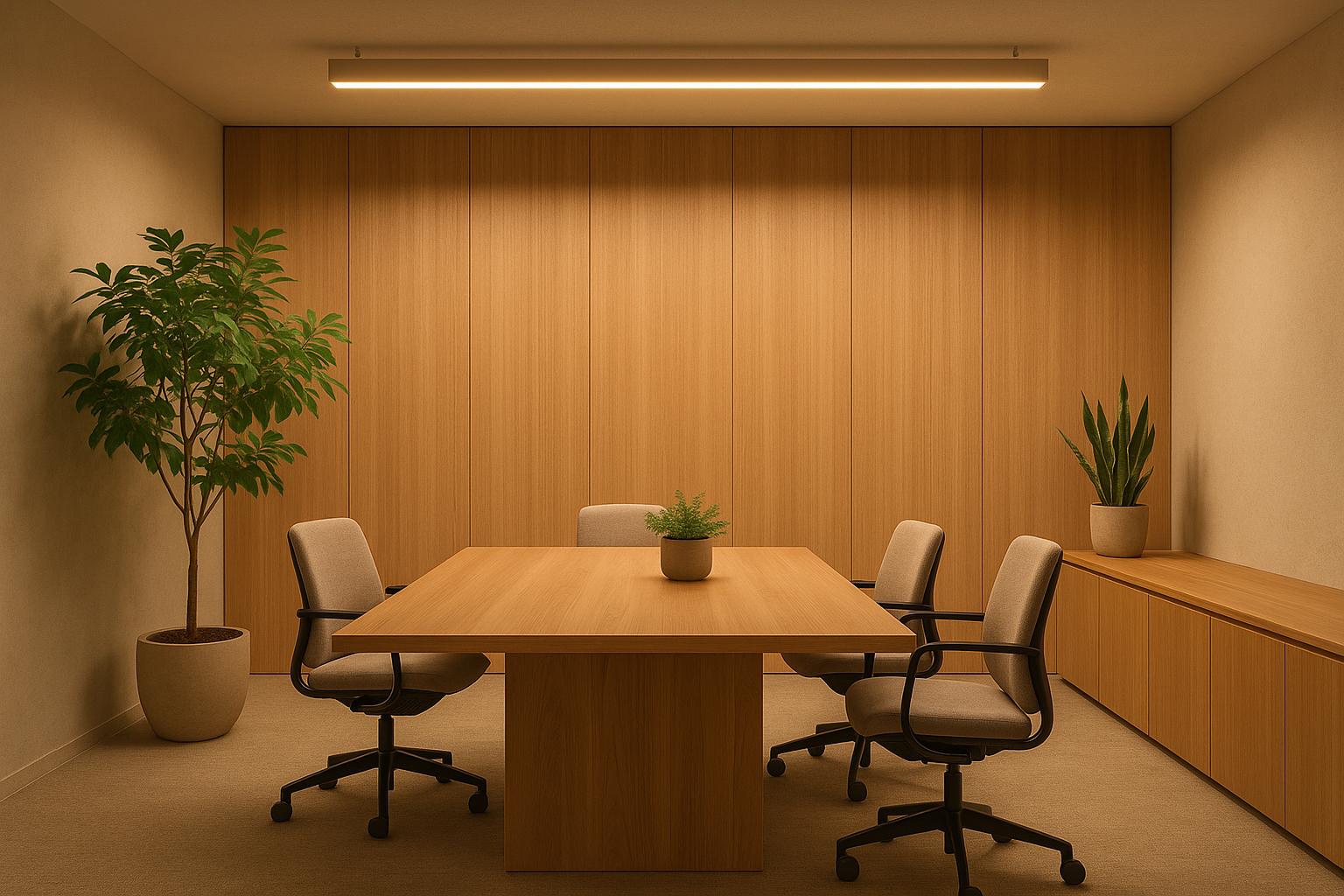Discover how sustainable lighting design enhances health, boosts energy efficiency, and integrates cutting-edge LED technologies for optimal building performance.


As the demand for energy efficiency and human-centered spaces grows, sustainable lighting design has emerged as a linchpin for architects, engineers, and facility managers. In a world increasingly shaped by environmental goals and technological advancements, understanding the science, design strategies, and technology behind sustainable lighting is no longer optional - it’s essential. This article unpacks the key insights from a comprehensive presentation on designing lighting systems that prioritize sustainability, aesthetics, and human health.
Lighting is more than just a way to illuminate spaces; it influences human perception, health, mood, and productivity. Sustainable lighting design goes beyond energy codes and aesthetics to create environments that integrate natural and artificial light in ways that support human well-being while reducing energy consumption and operational costs.
The science of light reveals how our visual and biological systems interact with different lighting conditions. Advanced lighting design incorporates these insights to achieve energy efficiency, improve comfort, and enhance visual quality.
Let’s dive deeper into these concepts.
Lighting’s role extends far beyond visibility. Our eyes and brain work together to process light, color, and brightness. Notably, the discovery of intrinsically photosensitive retinal ganglion cells (ipRGCs) has reshaped our understanding of light’s impact. These cells, unrelated to vision, influence hormone production and circadian rhythms, underscoring why exposure to certain types of light, such as blue light from screens at night, can disrupt sleep.
Traditional lighting metrics often focus on light levels, measured in foot candles, but this approach is limited. Instead, brightness-based design emphasizes surface reflectance and luminance - the light reflected from surfaces in a space. By focusing on illuminating walls, ceilings, and workspaces, designers create environments that are visually comfortable and energy-efficient.
For example, a project involving the Exploratorium in San Francisco redesigned lighting to meet code requirements while reducing overall light levels. This approach allowed for functional lighting without excessive brightness, creating a healthier and more sustainable visual environment.
Lighting design in healthcare settings is critical. Poor lighting can contribute to medical errors, while well-designed systems improve both patient recovery and staff performance. Layering light - using different sources for ambient, task, and accent lighting - ensures that lighting meets the diverse needs of healthcare environments.
Natural light is a vital component of sustainable lighting design. Humans are biologically drawn to daylight, which enhances mood, productivity, and overall well-being. However, daylighting must be carefully managed to avoid issues like glare and excessive heat gain.
Modern daylighting design employs sophisticated tools to simulate how sunlight interacts with a building. Metrics like Spatial Daylight Autonomy (sDA) and Annual Sunlight Exposure (ASE) help designers achieve optimal daylight penetration while minimizing glare.
In a noteworthy example, a school in Alabama used daylight modeling to integrate roof monitors, achieving complete daylight autonomy. Electric lights remained off during school hours without creating glare or overheating.
The evolution of LED technology has transformed lighting. Early LED adoption focused on energy efficiency, but modern advancements emphasize quality and adaptability. Features like tunable lighting replicate the color and intensity of natural light throughout the day, aligning with human circadian rhythms.
Smart lighting control systems, such as wireless controls, offer unprecedented flexibility and efficiency. These systems allow individual fixtures or groups of fixtures to adjust based on occupancy, daylight availability, or pre-programmed schedules. For example, a library in Wisconsin saved 70% on energy costs by dimming lights in unoccupied areas and using sensors to adjust lighting dynamically.
Wireless systems also reduce installation costs by eliminating the need for extensive wiring, making them more cost-effective and sustainable.
Low-voltage lighting systems, including Power over Ethernet (PoE), represent the next frontier in sustainable lighting. While PoE systems face challenges, such as high costs and fragile wiring, direct current (DC) low-voltage systems offer a more robust alternative. These systems simplify installation and align with the growing trend of smart buildings.
Lighting is increasingly integrated into the Internet of Things (IoT), enabling data collection and real-time optimization. Applications include tracking foot traffic in commercial spaces or monitoring patient flow in hospitals to improve efficiency.
Sustainable lighting design is no longer just about meeting energy codes - it’s about creating environments where people thrive. By combining scientific understanding, advanced technology, and architectural integration, today’s lighting solutions can reduce energy consumption, improve human health, and elevate the quality of spaces.
For property managers, facility operators, and municipal decision-makers, the time to embrace these transformative lighting strategies is now. By working with innovative designers and staying informed about emerging technologies, you can light the way to a healthier, more sustainable future.
Source: "Sustainable Lighting Design for Healthier Spaces" - Mazzetti foursight, YouTube, Aug 27, 2025 - https://www.youtube.com/watch?v=7Gkn8RTM7v0